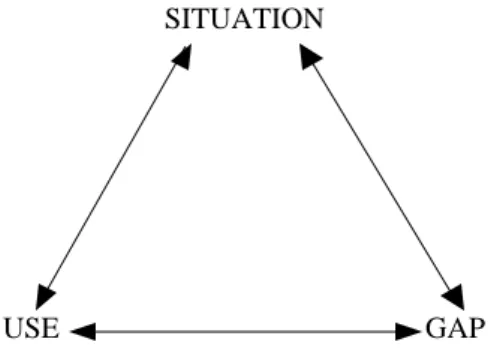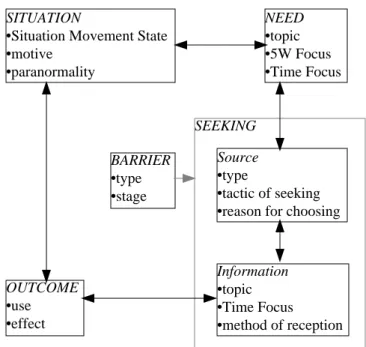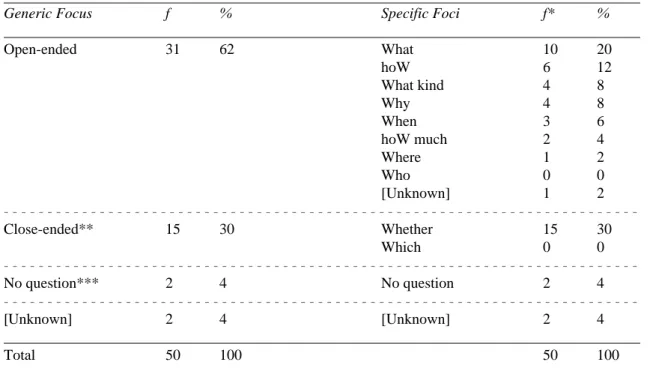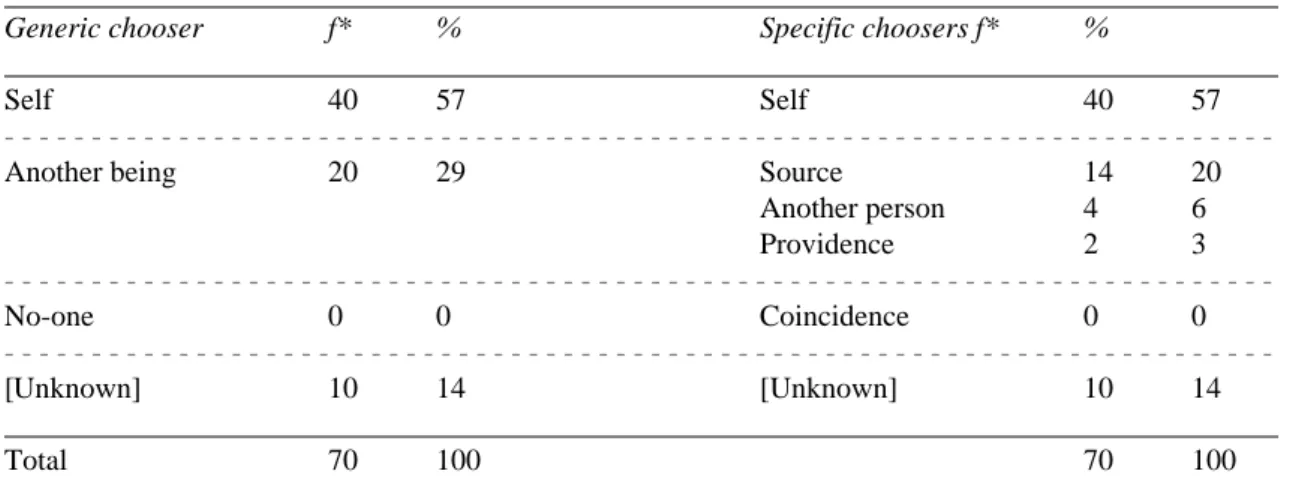The paranormal could be thought of as manifesting itself in a variety of thought forms and phenomena and virtually at any stage of the information processing process. Seven: it was found that the process of information action is a complex, non-linear, multi-level phenomenon.
Information seeking
Research has usually concentrated on specific parts of the information act, which has not given us the opportunity to form a real understanding of the individual's information-seeking activity as a whole (Reneker 1993, 488). Until now, the part of life that has been the target of information-seeking research has quite unevenly been the connection with work or studies.
The paranormal
Some of the grounds for the fascination with the supernatural are concerned with information, knowledge or sense-making: the treatment of the paranormal in the mass media (Evans 1973, according to Singer & Benassi in search of alternative solutions to life's questions (Keranto) 1996, 11; Sundback and searching for new meaning in an existence of apparent meaninglessness (Ben-Yehuda 1985, 103) On the private side, the subject of the thesis stemmed from my own, almost 15-year involvement with the paranormal.
The paranormal and information
Nevertheless, some relevant findings from these studies will figure in the discussion below. None of the 25 librarians who participated in the study admitted to being personally concerned with the supernatural (ibid., 148).
Obtaining paranormal information
Some informants thought that paranormal information was of no current importance because the societal atmosphere had become more tolerant, and therefore the. These findings can be summarized in one single statement: there is an apparent contradiction between the librarians' and their customers' views on the necessity of paranormal information in libraries.
Seeking information on the paranormal in everyday life — part I
It was also related to the motive (interest/concern) for seeking information, the choice of information channels and the activity of information seeking. In addition, it influenced the choice of information channels and the success of information search.
An evaluation
The most important area of the individual's life was not linked to the search for information at all. Since the subject of information action in the context of the paranormal is still virtually unexplored, I was largely left to my own devices as to how to conceptualize it.
Basic concepts
Taking advantage of the information action framework elaborated so far (above), I ended up with the situation-research need-outcome square with a barrier in the middle (Figure 2). Second, the text files had to be converted to a format that NUD*IST 4 (see section 4.6), the analysis program used, supports. Previous Sense-Making research has shown that the topic of the gap (need) is not related to the question asked (Dervin 1983b, 25).
As Table 28 shows, most often - every third time - the information was related to the present. Due to an unfortunate error in the interview phase (see section 4.2), the analysis of information use had to rely mainly on sporadic statements. It shows an entire information action process as perceived by Cecilia, one of the participants in the study.
The complexity is assigned based on the number of parallel situation chains in the process. This state of affairs is understandable, of course, given the burden of the past - allegiance to library and information services - and today's infatuation with technology. In the complementary angle, on the other hand, these extensions of the process are explicitly discussed.
I suggest that the number of situational processes in the chain reflects the longitudinal complexity of the process.

Sense-Making methodology
However, sensemaking research has gone beyond the simple exploratory stage and has expanded its reach into the deductive realm as well (Spirek. Sensemaking methodology can be characterized as "ethnographic because it allows respondents to define and anchor themselves their realities, qualitative because it is based on open interviews and reports findings mainly in qualitative terms, quantitative because procedures for quantitative analysis have been developed" (Dervin 1989a, 76).
Collecting data
It depends on the purpose of the research which element or elements are in the foreground in it. In most cases, the interaction between the researcher (me) and the researched was friendly rather than formal.
Analysing data
During the processing of the data, it appeared that some interviews could not be used in the current study. This resulted in some “gaps” in the processes and somewhat weakened the reliability of the findings, but on the other hand it provided a more comprehensive picture of the information campaign.
Presenting findings
He told me that - he addressed me from the 'old lady' - he said 'the old lady didn't give it to him. However, at some stage, the chains crossed and one of them in a manner of speaking "fertilized" the other.
Validity and reliability
Composing the processes rested on my shoulders: I reconstructed the course of events myself on the basis of the interview texts. Despite these limitations, the findings of this work seem to bear enough resemblance to the realities of paranormalists.
Generalizability
Throughout the empirical part of the study, and especially during coding, I made sure that the participants' words were distorted as little as possible. The reliability of the results should also be sufficient, because all informants (except one; see above) were asked about the same questions in about the same form and order.
Interviewees
Only two (14%) people indicated that they need this information equally for work and non-work purposes, while none. The demographics of the study participants look quite normal, so they were seemingly normal people.
Normal versus paranormal
Of the remaining two respondents, one obtained paranormal information several times a year, while the other very rarely, not even on an annual basis, resorted to this type of information. It was this party of four who, like the first time, appeared in my notebook and room and then explained that they were from the Joint Universal Alliance of the Primal Knowledge. They - it started when my space friends or these members of the Galactic Federation started telling me about Spiritual Science.
Thus begins a fantastic and yet supposedly true journey into the great world of the unknown. In this and the next chapter, the results of the current interview study are described in detail. Since information seeking or action in the context of the supernatural has not really been studied by others, my master's thesis (Kari 1996; also Kari 1998b) is often drawn upon as a point of comparison when it comes to the paranormal.
Situations
I suggest that the classification testifies to the specificity, or the individual's awareness of the need for information. However, information needs in the context of the paranormal seem to focus on the present. The frequency of the four common themes was very similar in terms of information and needs.
A comparison of specific paranormal topics of information (Table 27) and needs (Table 10) yielded the following results. Such a way of transmitting information is said to often require a wider awareness of the actor (Heikkilä 1998, 74). Many informational effects, however, have been related to the paranormal at the level of ideas.
There was a relationship between the paranormality of the situation and the paranormality of the subject of the information received, too (see Table 46): under normal conditions,. In this respect, it can be concluded that information in the context of the supernatural is often missing or.

Dimensions
However, before this could be accomplished, she had to dig up the viewer's phone number (Need Process 1B). In terms of information action, a microprocess is roughly equivalent to one stage - or two, as in the case of source and information, since the acquisition of information occurs in interaction with the source. A process of this type had an obvious beginning and end, and its duration could be anywhere from days to years.
In effect, this meant that the action of the individual could be seen as part of this gigantic sequence of eventualities involving not just one person, but a collective. I also like to believe in the final analysis in the spirit world and in these kinds of spirits, so when I mention them - at some point this will unravel in a minute - I always believe that it's not a mystical thing, something like that, a matter that is so could be explained well or not.”. Although this was not reflected in the data, it can be extrapolated that the individual may consider a personal process of his as a step in a.

Stages
Indeed, this narrowness of inquiry may have also limited – both qualitatively and quantitatively – the types of barriers (in Section 6.6) that can be discerned. A need process belonging to two belonging to one situation, a situational process (source: Jenni) a process (source: Nelli). A situation did not always give rise to a need process (see Figure 44), in which case the process structure was simply a "situation".
In a superprocess (see Figure 52), the interviewee saw her endeavor—the application of her theories to the development of revolutionary technology—as a grand and lengthy process in which a multitude of experts would participate. The location of the first (and sometimes only) situational process of each entire process was Situation 1. The predominance of the first situational processes as connecting elements is understandable, because most situational chains involved only one situational process.

Results in a nutshell
Here the role of the supernatural is apparently limited to guiding the process of information seeking outside of conventional themes. The model of information action assumes by default that the actor is in the role of information seeker. In other words, it is a process of information action proper, independent of its context - a situation.
The model in Figure 76 provides a clue to the reality of information action as observed in this study (and supplemented by common sense). Then there is a constant danger of a barrier occurring at any stage of the information action process. The standard path (from situation to outcome) of the situation process is already quite well known, but it provides an extremely limited picture of information action.

Methodological remarks
Empirical results
Theory









